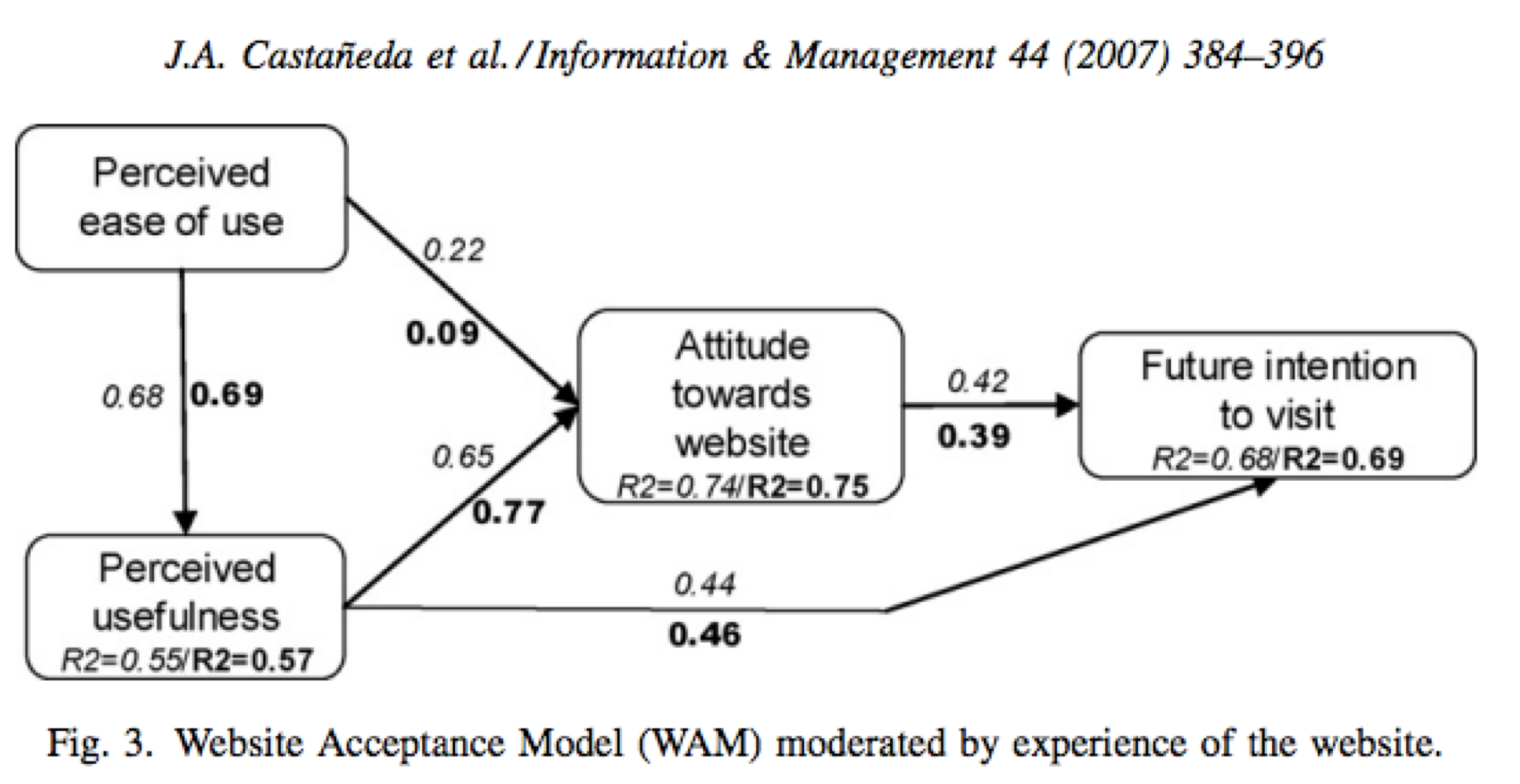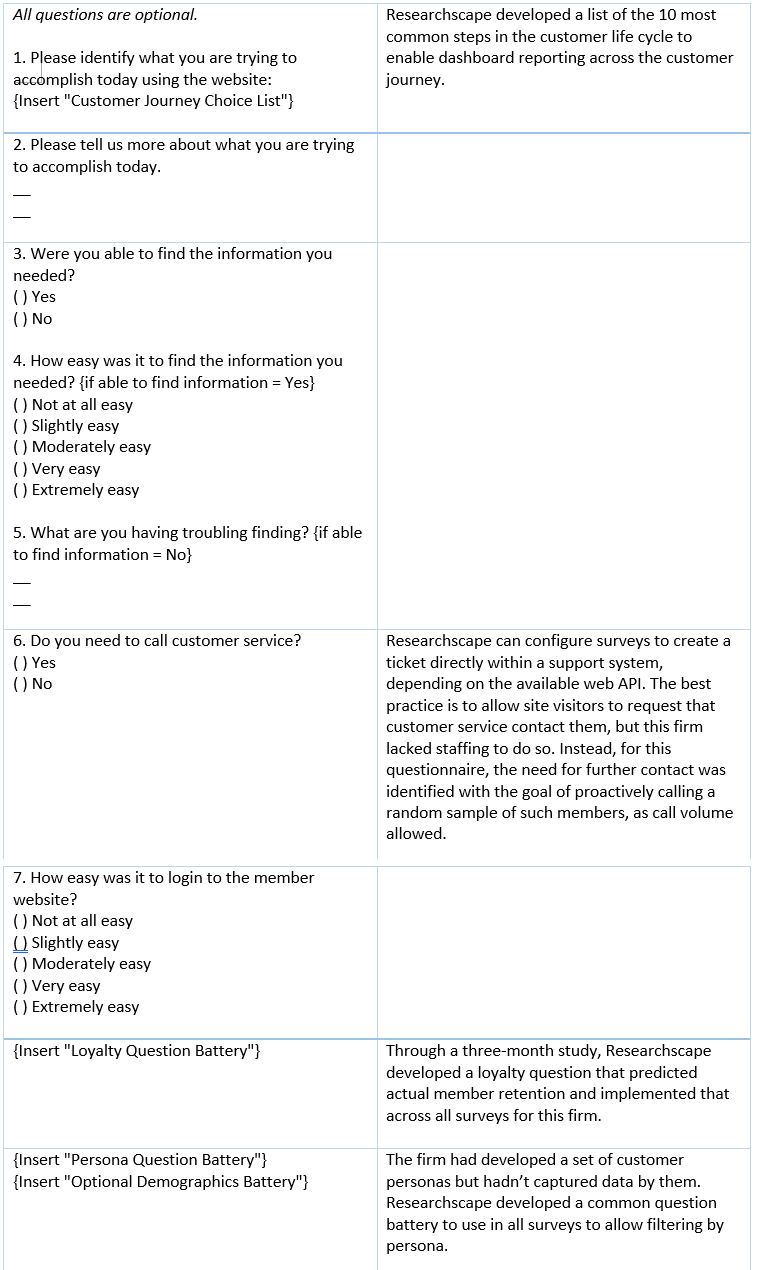For an ad-supported website that was losing market share to competitors, Researchscape streamlined the Web Acceptance Model and updated it to follow question-design best practices.

(Castañeda, J. Alberto, Francisco Muñoz-Leiva, and Teodoro Luque. “Web Acceptance Model (WAM): Moderating effects of user experience.”Information & Management 44.4 (2007): 384-396.)
The resulting questionnaire:
How easy is it to use the website?
( ) Not at all easy
( ) Slightly easy
( ) Moderately easy
( ) Very easy
( ) Extremely easy
How responsive is the website?
( ) Very slow
( ) Slow
( ) Average speed
( ) Fast
( ) Very fast
How effective was the website at meeting your needs?
( ) Not at all effective
( ) Slightly effective
( ) Moderately effective
( ) Very effective
( ) Extremely effective
How useful is the website to you in general?
( ) Not at all useful
( ) Slightly useful
( ) Moderately useful
( ) Very useful
( ) Extremely useful
How much do you like the website, if at all?
( ) Do not like at all
( ) Like a little
( ) Like a moderate amount
( ) Like a lot
( ) Like a great deal
Overall how satisfied are you with the website?
( ) Not at all satisfied
( ) Slightly satisfied
( ) Moderately satisfied
( ) Very satisfied
( ) Completely satisfied
How likely are you to visit the web again?
( ) Not at all likely
( ) Slightly likely
( ) Moderately likely
( ) Very likely
( ) Completely likely
How reluctant are you to switch to a different website that meets the same needs?
( ) Not at all reluctant
( ) Slightly reluctant
( ) Moderately reluctant
( ) Very reluctant
( ) Completely reluctant
For a B2C company, Researchscape designed a CX (Customer Experience) program with an annual relationship survey and transactional surveys for the most common steps on the customer journey. One of those transactional surveys was a site-feedback intercept survey.

Unfortunately sites with low traffic (under 40,000 unique visitors a month) typically lack the volume to gather enough quantitative information; for smaller sites, a survey invite via email to evaluate the site is often the best approach.
Whether used by just the marketing department, or as part of a comprehensive Customer Experience program, site-feedback surveys can provide valuable input to use to prioritize future web development.